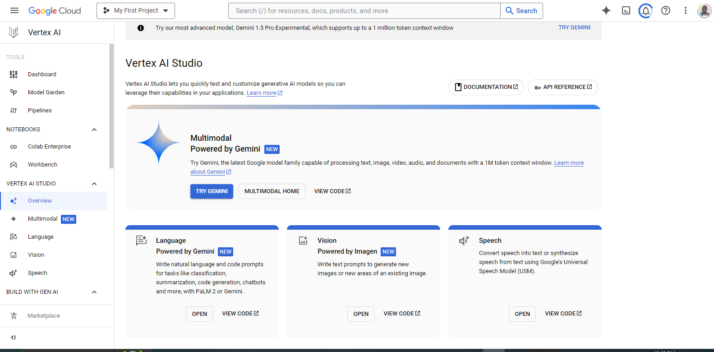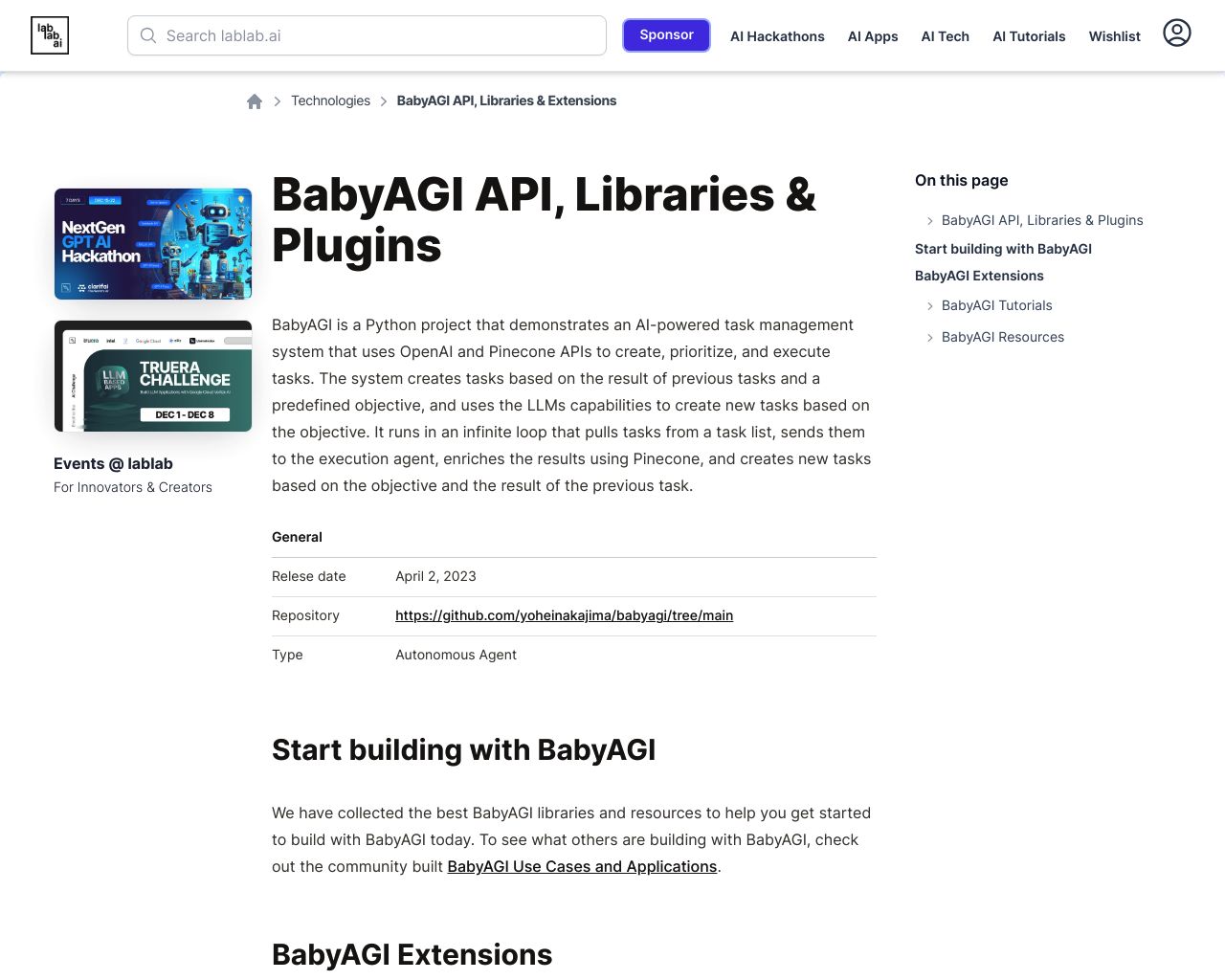Vertex AI vs. BabyAGI: Comparing Enterprise ML and Task Automation
Artificial intelligence transforms businesses daily, prompting a search for accessible, powerful AI solutions. Our comparison of Vertex AI vs. BabyAGI, and SmythOS reveals distinct approaches to AI development and deployment. Vertex AI offers enterprise-grade machine learning capabilities, while BabyAGI focuses on autonomous task management. SmythOS emerges as a versatile, user-friendly platform for AI agent creation. This review examines each platform’s strengths, limitations, and ideal use cases, empowering readers to choose the best AI solution for their specific needs. Whether you’re a developer seeking advanced customization or a business leader aiming to integrate AI efficiently, our analysis provides the insights to inform your decision.
Vertex AI Overview
Vertex AI empowers developers and businesses to build, deploy, and scale machine learning models and AI applications. This comprehensive platform integrates powerful tools for data engineering, model development, and MLOps, streamlining the entire AI lifecycle.


Screenshot from Vertex AI studio.
Vertex AI’s standout feature is its support for multimodal generative AI, particularly through the Gemini models. These advanced models process text, images, audio, and video inputs, enabling developers to create sophisticated AI agents for tasks ranging from chatbots to content generation. The platform’s Model Garden offers a diverse selection of pre-trained models, including Google’s proprietary offerings and select open-source options, providing flexibility for various use cases.
Vertex AI’s standout feature is its support for multimodal generative AI… These advanced models process text, images, audio, and video inputs, enabling developers to create sophisticated AI agents…
Developers benefit from Vertex AI’s robust model customization capabilities. The platform allows fine-tuning of foundation models, improving cost-efficiency and reducing response latency. Features like grounding, retrieval-augmented generation (RAG), and function calling enhance model responses with real-time information and external API integration, making AI agents more contextually aware and capable.
Vertex AI shines in its enterprise-grade features, including comprehensive MLOps tools for model versioning, monitoring, and orchestration. The platform’s scalability and integration with Google Cloud services make it particularly appealing for large-scale deployments. However, its complexity may present a steeper learning curve for beginners or small teams without extensive ML expertise.
Vertex AI shines in its enterprise-grade features, including comprehensive MLOps tools… However, its complexity may present a steeper learning curve for beginners or small teams…
While Vertex AI offers powerful capabilities, it lacks some features found in more specialized AI agent platforms. For instance, it doesn’t provide a no-code editor, which could limit accessibility for non-technical users. Additionally, the platform’s focus on ML model development and deployment may not fully address the needs of users seeking a dedicated AI agent builder with extensive pre-built templates or visual workflows for agent creation.
BabyAGI Overview
BabyAGI revolutionizes task management with its innovative open-source AI system. Designed to mimic human cognitive processes, BabyAGI autonomously generates, prioritizes, and executes tasks based on given objectives. This cutting-edge platform continuously learns and adapts, offering a dynamic approach to problem-solving across various industries.


BabyAGI’s core strength lies in its ability to create and manage task lists intelligently. It employs advanced natural language processing and vector databases to store and retrieve task results efficiently. This system excels in adapting to new challenges, making it invaluable for complex problem-solving in fields like healthcare, education, and creative writing.
BabyAGI analyzes previous results and objectives to generate new tasks, ensuring a continuous workflow that improves over time.
The platform’s unique selling point is its task-driven autonomy. BabyAGI analyzes previous results and objectives to generate new tasks, ensuring a continuous workflow that improves over time. This adaptability allows for personalized approaches to task management, enhancing productivity across various applications.
While BabyAGI offers powerful capabilities, it requires some technical expertise to implement effectively. The platform lacks a no-code editor, which may limit accessibility for non-technical users. However, its integration with various APIs and support for multiple data formats compensate for this limitation, providing flexibility for developers and researchers.
BabyAGI represents a significant step towards artificial general intelligence, bridging the gap between narrow AI applications and human-like cognitive abilities. Its continuous learning and improvement capabilities position it as a valuable tool for industries seeking to enhance efficiency and innovation through intelligent automation.
Feature Comparison
Vertex AI and BabyAGI offer contrasting approaches to AI development and deployment. Vertex AI provides a comprehensive enterprise-grade platform for machine learning and AI model development. It excels in scalability, MLOps tools, and integration with Google Cloud services. Vertex AI supports multimodal AI through models like Gemini, enabling sophisticated applications across text, image, audio, and video inputs.
BabyAGI, on the other hand, focuses on autonomous task management and human-like learning. Its strength lies in generating, prioritizing, and executing tasks based on given objectives. BabyAGI employs natural language processing and vector databases for efficient task result storage and retrieval. While powerful in task-driven autonomy, BabyAGI lacks some of the enterprise features and development tools found in Vertex AI.
In terms of core components, Vertex AI offers robust model customization, extensive MLOps tools, and a Model Registry for version control. BabyAGI prioritizes adaptive learning and continuous improvement in task management. For security, Vertex AI provides comprehensive data encryption and access controls, whereas BabyAGI’s open-source nature may require additional security implementations.
Feature Comparison Table
| Vertex AI | BabyAGI | SmythOS | |
|---|---|---|---|
| CORE FEATURES | |||
| Hosted Agents (Dev, Production) | ✅ | ❌ | ✅ |
| Environments (Dev, Production) | ✅ | ❌ | ✅ |
| Visual Builder | ✅ | ❌ | ✅ |
| No-Code Options | ❌ | ❌ | ✅ |
| Explainability & Transparency | ✅ | ❌ | ✅ |
| Human-AI Interaction | ✅ | ❌ | ✅ |
| Audit Logs for Analytics | ❌ | ❌ | ✅ |
| Agent Work Scheduler | ✅ | ❌ | ✅ |
| Logs & Monitoring | ✅ | ❌ | ✅ |
| SECURITY | |||
| Constrained Alignment | ✅ | ❌ | ✅ |
| IP Control | ✅ | ❌ | ✅ |
| COMPONENTS | |||
| Foundation AIs | ✅ | ❌ | ✅ |
| Huggingface AIs | ❌ | ✅ | ✅ |
| Zapier APIs | ❌ | ✅ | ✅ |
| Data Lakes | ✅ | ❌ | ✅ |
| DEPLOYMENT OPTIONS (EMBODIMENTS) | |||
| Staging Domains | ✅ | ❌ | ✅ |
| Production Domains | ✅ | ❌ | ✅ |
| Deploy as Scheduled Agent | ✅ | ❌ | ✅ |
| DATA LAKE SUPPORT | |||
| Sitemap Crawler | ❌ | ❌ | ✅ |
| YouTube Transcript Crawler | ❌ | ❌ | ✅ |
Best Alternative to Vertex AI and BabyAGI
SmythOS emerges as the superior alternative to Vertex AI and BabyAGI, offering a comprehensive platform for AI agent development and deployment. Our solution combines the best of both worlds: the enterprise-grade capabilities of Vertex AI and the task-driven autonomy of BabyAGI, while addressing their limitations.
We provide a visual builder with drag-and-drop functionality, enabling users to create sophisticated AI workflows without extensive coding knowledge. This democratizes AI development, making it accessible to a broader audience than Vertex AI’s more technical approach. Unlike BabyAGI’s focus on autonomous task management, SmythOS offers a versatile platform supporting various AI applications, from chatbots to complex data analysis.
SmythOS emerges as the superior alternative to Vertex AI and BabyAGI, offering a comprehensive platform for AI agent development and deployment.
Our platform excels in ease of use and feature richness. We offer hosted agents for both development and production environments, multi-agent collaboration, and seamless API integrations. These features surpass BabyAGI’s capabilities and match or exceed Vertex AI’s offerings. SmythOS also provides robust security measures, including data encryption and OAuth support, addressing enterprise-level concerns that open-source solutions like BabyAGI may lack.
SmythOS stands out with its unlimited use cases. From customer service automation to complex data analysis and decision-making processes, our platform adapts to diverse business needs. We support various AI models, including those from Hugging Face, and integrate with popular tools like Zapier. This flexibility allows users to leverage existing resources while building cutting-edge AI solutions, a capability not fully realized in either Vertex AI or BabyAGI.
By choosing SmythOS, users gain access to a powerful, user-friendly platform that combines the best features of Vertex AI and BabyAGI while offering unique advantages. Our solution empowers businesses to harness AI’s full potential, driving innovation and efficiency across industries.
Conclusion
Vertex AI, BabyAGI, and SmythOS each offer unique approaches to AI development and deployment. Vertex AI excels in enterprise-grade machine learning with robust MLOps tools and Google Cloud integration. BabyAGI shines in autonomous task management and adaptive learning. However, SmythOS emerges as the superior choice for businesses seeking a comprehensive, user-friendly AI agent development platform.
SmythOS stands out with its intuitive drag-and-drop interface, extensive integration ecosystem, and versatile deployment options. Unlike Vertex AI’s complex learning curve or BabyAGI’s technical requirements, SmythOS democratizes AI development, making it accessible to both technical and non-technical users. The platform’s support for multi-agent orchestration, pre-built API integrations, and templates significantly reduces development time and complexity.
While Vertex AI and BabyAGI offer powerful capabilities in their respective domains, SmythOS provides a more holistic solution for businesses looking to leverage AI across various applications. Its ability to create agents that can be deployed anywhere – from chatbots to APIs to scheduled tasks – offers unparalleled flexibility. The platform’s focus on rapid development and deployment aligns perfectly with the fast-paced needs of modern businesses.
For those ready to experience the future of AI agent development, SmythOS offers a risk-free trial with unlimited agent creation. Explore our diverse range of AI-powered agent templates to jumpstart your projects, or dive into our comprehensive documentation to unlock the full potential of SmythOS. By choosing SmythOS, you’re not just adopting a tool; you’re embracing a revolution in AI-powered productivity and innovation.
Last updated:
Disclaimer: The information presented in this article is for general informational purposes only and is provided as is. While we strive to keep the content up-to-date and accurate, we make no representations or warranties of any kind, express or implied, about the completeness, accuracy, reliability, suitability, or availability of the information contained in this article.
Any reliance you place on such information is strictly at your own risk. We reserve the right to make additions, deletions, or modifications to the contents of this article at any time without prior notice.
In no event will we be liable for any loss or damage including without limitation, indirect or consequential loss or damage, or any loss or damage whatsoever arising from loss of data, profits, or any other loss not specified herein arising out of, or in connection with, the use of this article.
Despite our best efforts, this article may contain oversights, errors, or omissions. If you notice any inaccuracies or have concerns about the content, please report them through our content feedback form. Your input helps us maintain the quality and reliability of our information.
